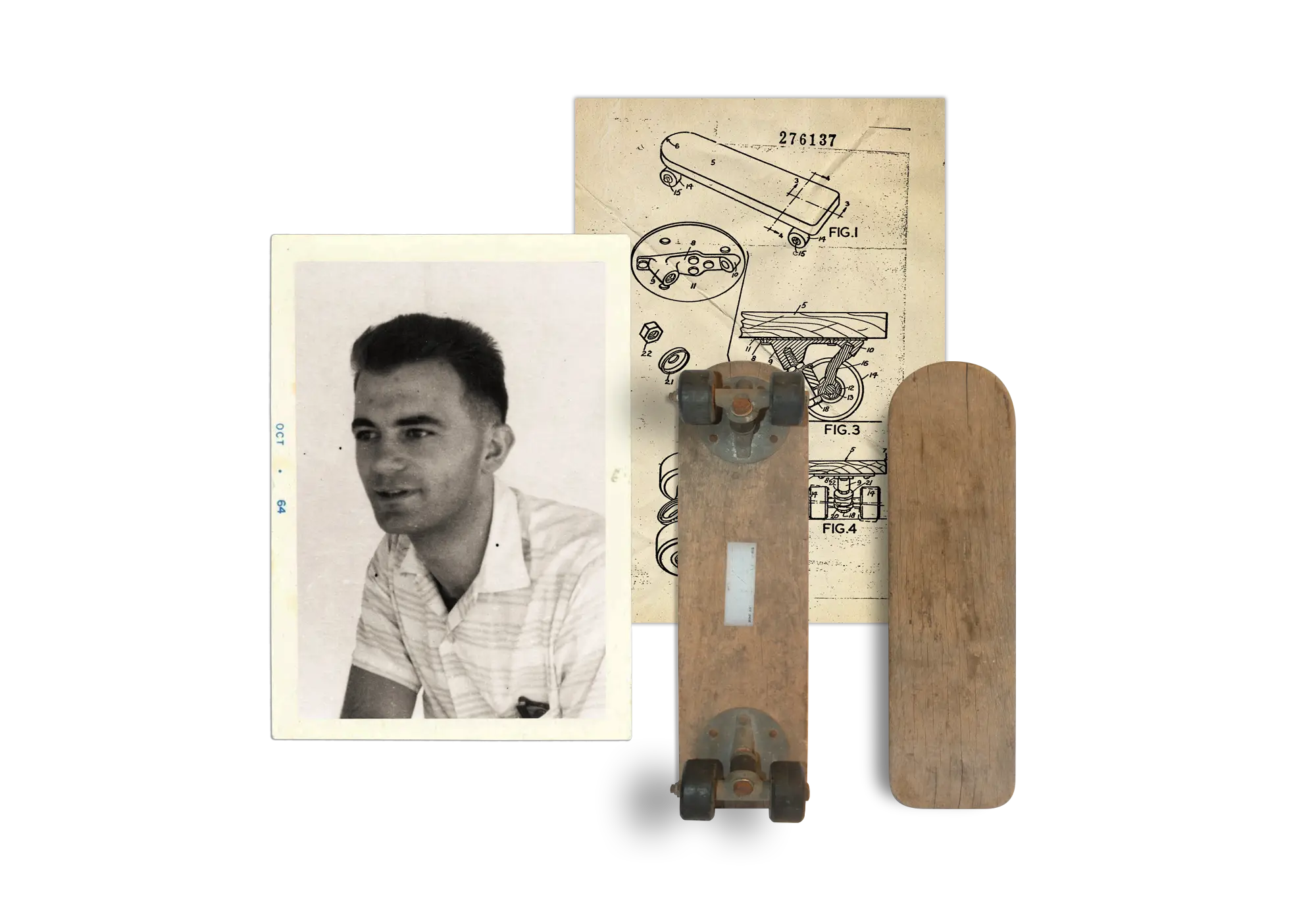
The Beginning
1963
In 1963, 29-year-old medical student Leo Kalokerinos turned his parents’ home in Rose Bay, Sydney, into Australia’s first 'Sidewalk Surfer' company. Inspired by his friend's son, who was making homemade skateboards with his neighbourhood friends, Leo set out to create and patent his new product called the ‘Landsurfa’ on August 27, 1963. To help bring his vision to life, Leo partnered with a local organisation that employed young adults with disabilities to shape and assemble the boards, which were then stored in his parents' hallway awaiting distribution across Australia.
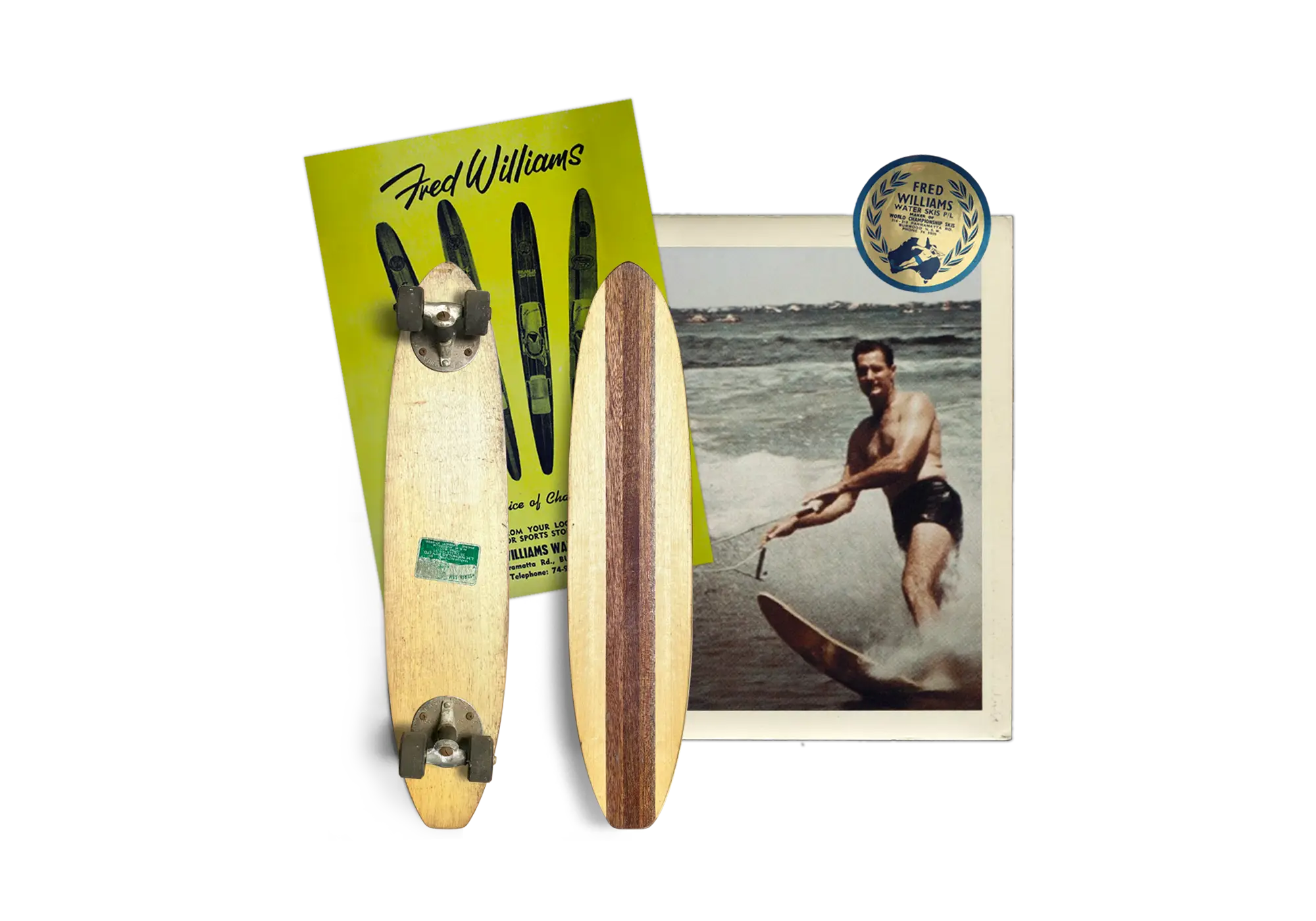
THE FRED WILLIAMS LANDSURFA
1964
After a successful debut, the shape and size of the boards evolved, taking on the appearance of miniature surfboards, offering riders greater stability and the ability to perform surf-inspired maneuvers. This new design garnered a loyal following among young surfers and enthusiasts across the sun-soaked shores of Australia. Leo partnered with Fred Williams, a world renowned water skier and manufacturer, who provided offcuts from his production. These materials became the foundation for Leo's new designs, with varying ply patterns being made available. However, the complex construction made the boards expensive to produce, limiting their availability to a brief period.

THE BIRTH OF SAM
1965
To capture the attention of children, Leo teamed up with a Sydney advertising agency to create a mascot—"Sam". His debut was on a square-tailed skateboard made from durable Tasmanian oak, which became a hallmark of Surfa Sam's identity. He quickly won the hearts of thousands of kids across Australia, becoming the beloved face of the brand and the key graphic on the boards going forward.
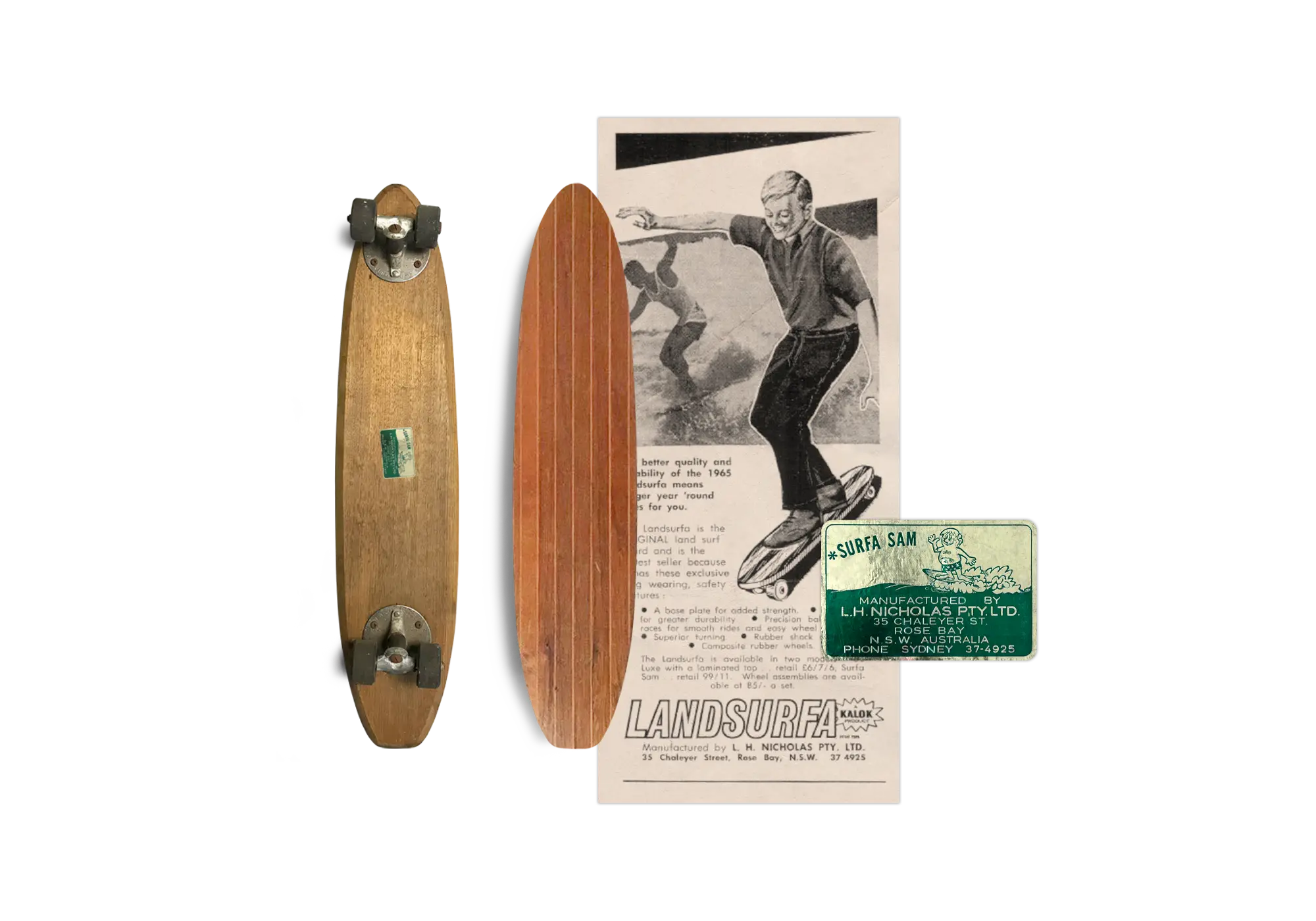
LANDSURFA 'DE LUXE'
1965
In 1965, the 30" Landsurfa ‘De Luxe’ was added to the lineup, followed by a mini 22" version. It featured a timber stringer veneer on a solid Tasmanian oak deck, shaped to mimic the 'pig' shaped surfboards created by Californian shaper Dale Velzy in 1955. This new veneer design made it more cost-effective to produce than its predecessor, the ‘Fred Williams Landsurfa.’ Like the Fred Williams board, the Landsurfa came in a variety of veneer designs, utilising whatever veneers were available at the time.
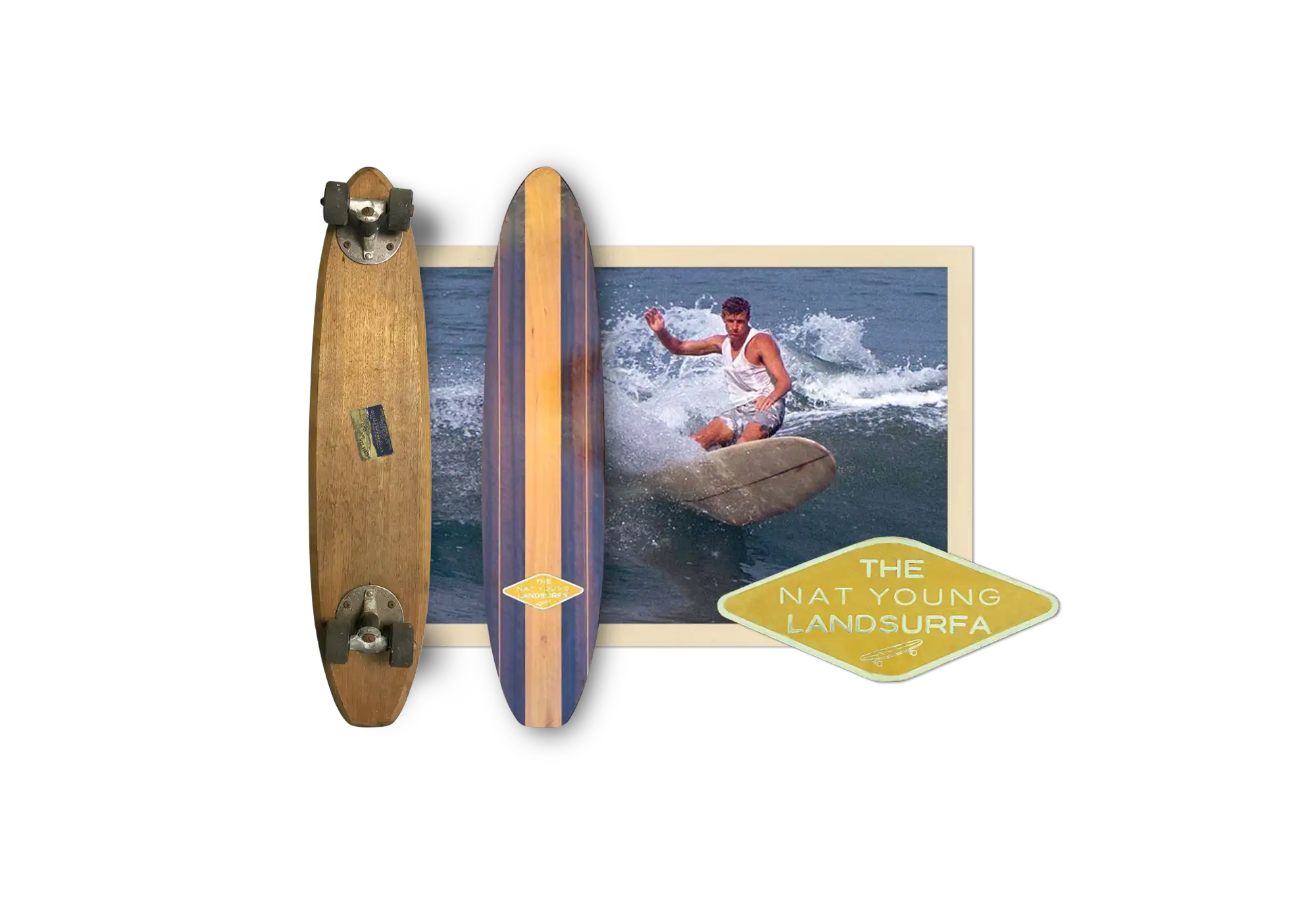
THE NAT YOUNG LANDSURFA
1965
As skateboarding continued to grow in popularity among surfers, Leo aimed to connect his product with a surfing legend. With Duke Kahanamoku and Midget Farrelly already launching their own pro model skateboards, Leo turned to four-time world champion Nat Young to create 'The Nat Young Landsurfa.' Part of the newly introduced 'De Luxe' range, it was only produced for a limited time, and sold through retailers like Surf Dive 'n' Ski.
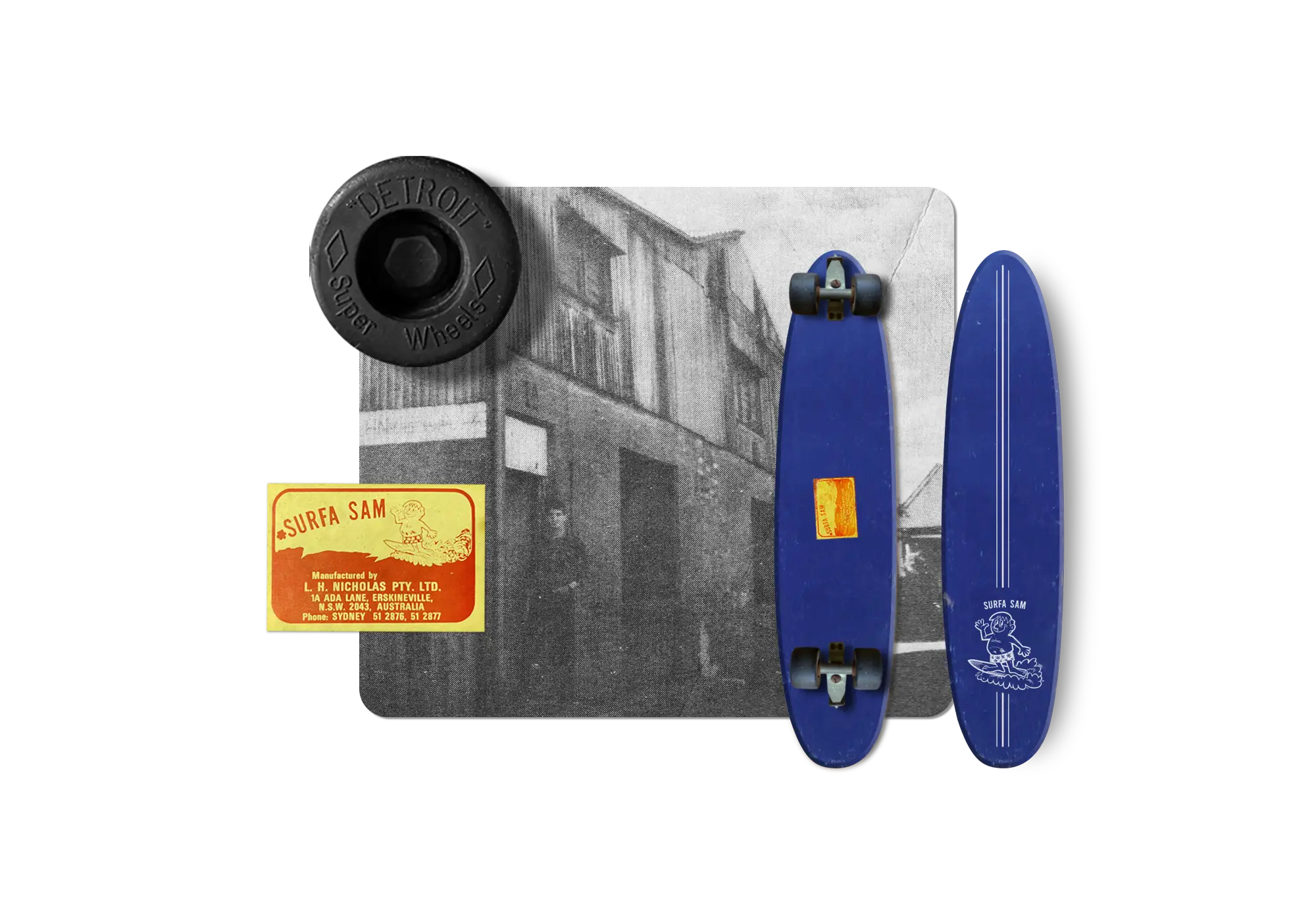
THE FACTORY
1967
To meet rising demand and increase production, Leo moved operations from his family home to a factory in Erskineville, Sydney, much to his mother's delight. This relocation greatly increased capacity, enabling a small team to produce over 2,000 skateboards weekly. Leo took the opportunity to refresh the popular Surfa Sam board, redesigning it with a new shape and equipping it with the new 54mm 'Detroit Super Wheels,' named after the automotive capital and inspired by the Hot Rod craze at the time. A more cost-effective sheet metal truck was also developed, replacing the original 'Landsurfa wheel assembly.'
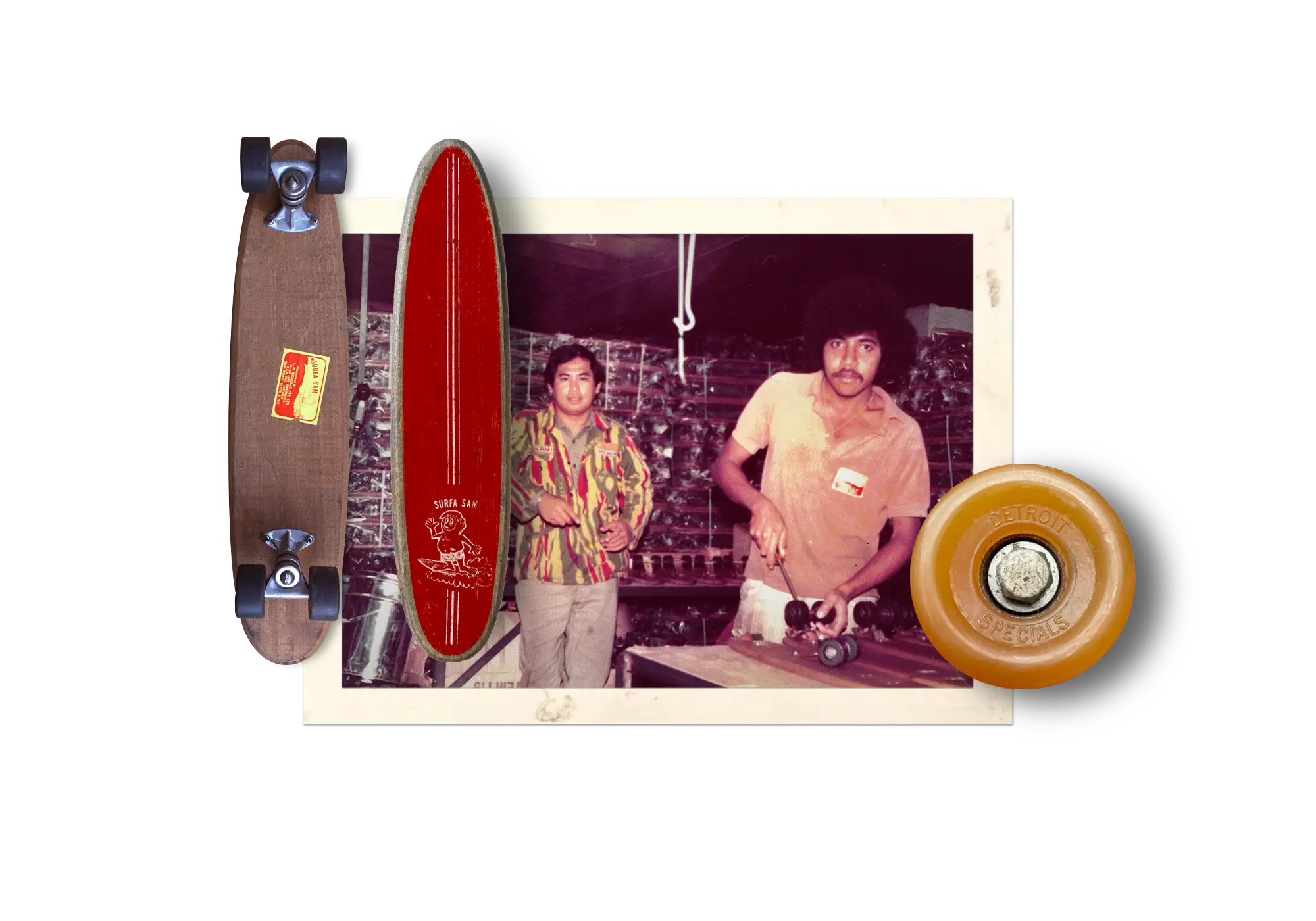
end of chapter 1
1970'S - 80'S
In the 1970s, as skateboarding continued to evolve, Leo remained committed to crafting traditional solid oak sidewalk surfers. As the new era ushered in vibrant styles and fashion, the decks and wheels also took on a more colourful look. New products were introduced to the De Luxe range, including the 'Kalok' truck—named after his family name, Kalokerinos—and the larger 'Detroit Special' wheel, both of which enhanced performance for a new era of skaters.
Despite becoming a Doctor of Medicine, Leo balanced his medical career with his love for Surfa Sam, but ultimately, his newly found professional path took precedence, leading to the factory's closure in the early 1980s after selling over 250,000 skateboards.
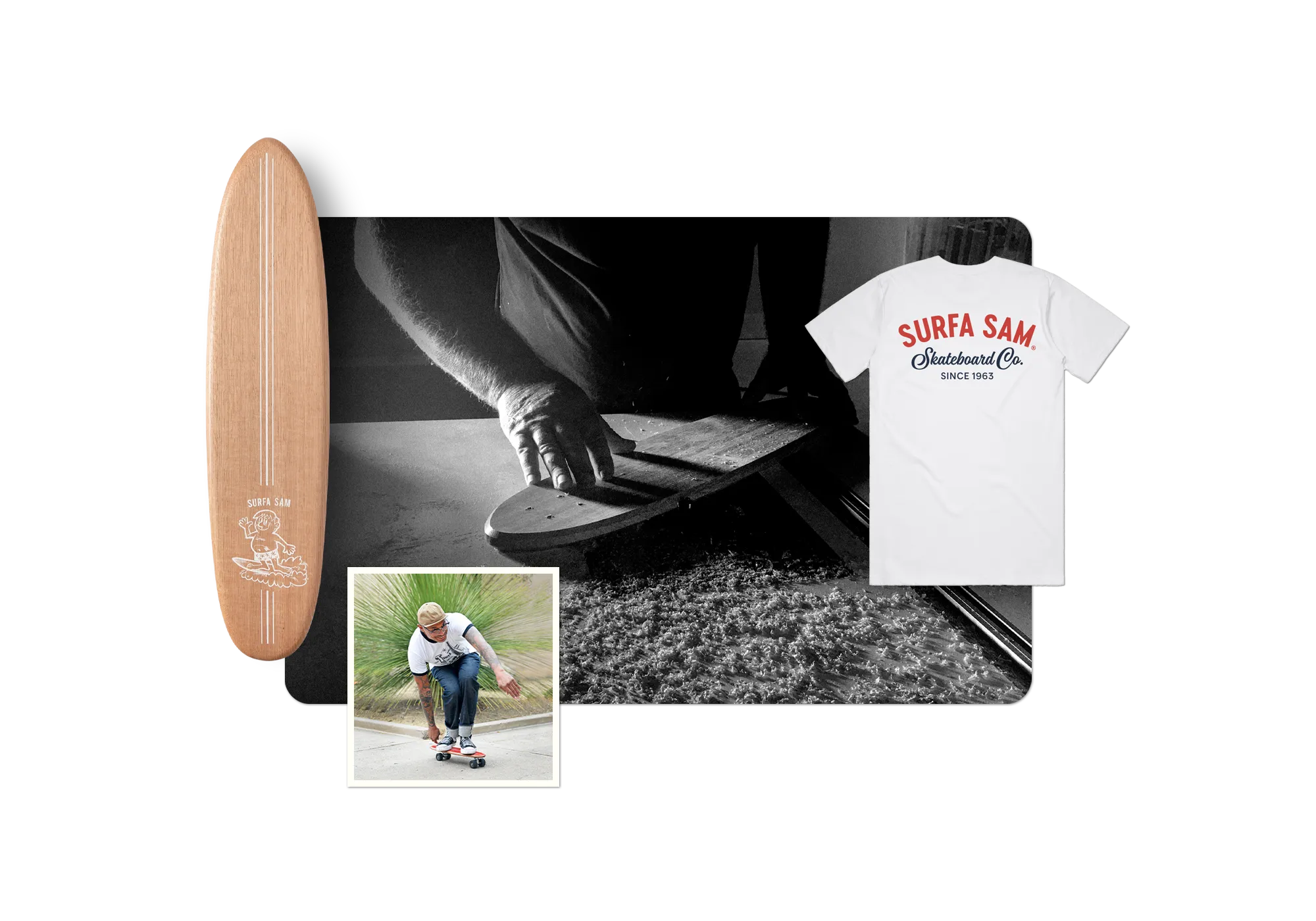
chapter 2
today
After a brief hiatus, Surfa Sam continues to realise the vision of Dr Leo Kalokerinos, and proudly continues to craft traditional hand-shaped Sidewalk Surfers in small, curated batches right here in Australia. We believe in looking to the past for inspiration, designing and producing thoughtful, quality-made products that merge our deep appreciation for heritage and classic surf skate style.

